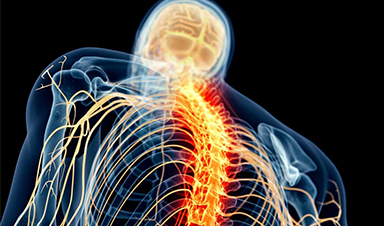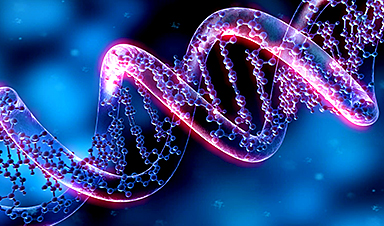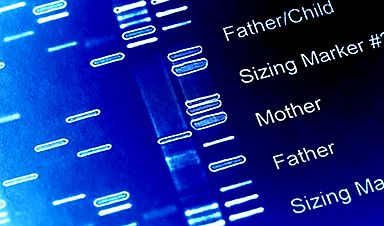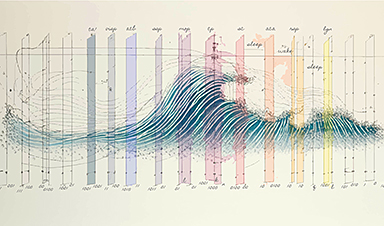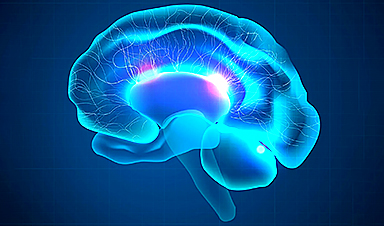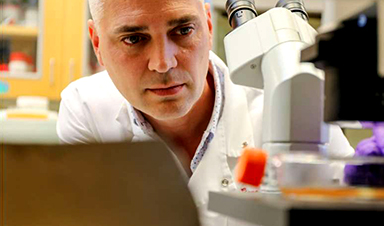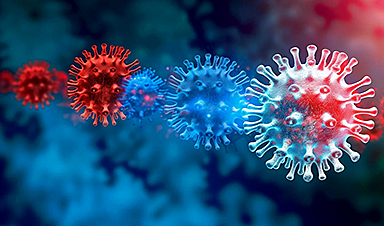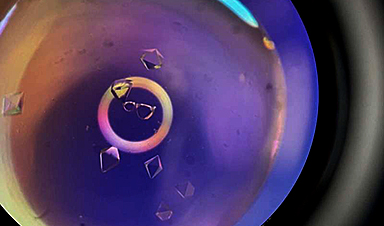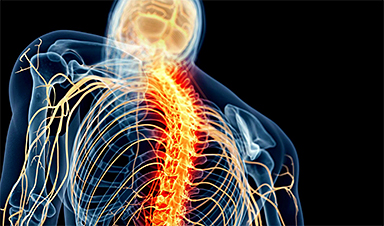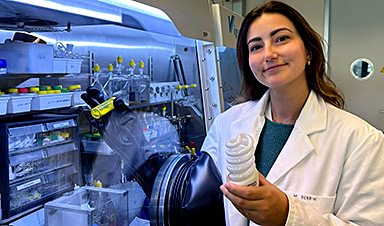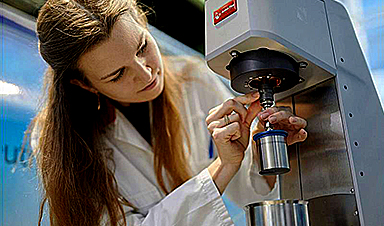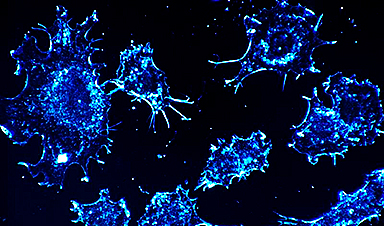UC Davis researchers seek to develop a non-addictive, monthly painkiller.
During the pandemic, doctors employed infusions of monoclonal antibodies (lab-made antibodies) to help patients fight COVID-19 infections. University of California, Davis researchers are now attempting to develop monoclonal antibodies that may aid in the treatment of chronic pain. The objective is to create a monthly non-addictive pain medication that can be used instead of opioids.
The project is led by Vladimir Yarov-Yarovoy and James Trimmer, professors in the Department of Physiology and Membrane Biology at the UC Davis School of Medicine. They’ve established an interdisciplinary team that includes several of the same experts that are working on turning tarantula venom into a pain medication.
Yarov-Yarovoy and Trimmer were awarded a $1.5 million grant earlier this year by the National Institutes of Health’s HEAL Initiative, a determined effort to hasten the development of scientific solutions to the country’s opioid crisis.
People can become addicted to opioids due to chronic pain. According to the CDC National Center for Health Statistics, there will likely be 107,622 drug overdose deaths in the US in 2021, up from an expected 93,655 deaths in 2020.
“Recent breakthroughs in structural and computational biology — using computers to understand and model biological systems — have set the stage for applying new approaches to create antibodies as superior therapeutic candidates to treat chronic pain,” said Yarov-Yarovoy, the principal investigator for the award.
“Monoclonal antibodies are the fastest growing sector of the pharmaceutical industry and have many advantages over classical small molecule drugs,” Trimmer said. Small molecule drugs are drugs that can easily enter cells. They are widely used in medicine.
Trimmer’s lab has created thousands of different monoclonal antibodies for various purposes over many years, but this is the first attempt to generate antibodies aimed at pain relief.
Monoclonal antibodies are already being used for migraine
Although it may seem very futuristic, the Food and Drug Administration has already approved monoclonal antibodies to treat and prevent migraine. These new medications act on a migraine-associated protein called calcitonin gene-related peptide.
The project at UC Davis has a different target—specific ion channels in nerve cells known as voltage-gated sodium channels. The channels are like “pores” on the nerve cell.
“Nerve cells are responsible for transmitting pain signals in the body. Voltage-gated sodium ion channels in nerve cells are the key transmitters of pain,” explained Yarov-Yarovoy. “We aim to create antibodies that will bind to these specific transmission sites at the molecular level, inhibiting their activity and stopping the transmission of pain signals.”
The researchers are focused on three specific sodium ion channels associated with pain: NaV1.7, NaV1.8 and NaV1.9.
Their goal is to create antibodies that can fit into each of these channels like a key into a lock. This targeted approach is intended to stop the channels from sending pain signals but not interfere with other signals sent through the nerve cells.
The challenge is that the structures of the three channels they are attempting to block are incredibly complex.
Software programs help create virtual models
To address this, they are turning to software programs called Rosetta and AlphaFold. With Rosetta, the researchers are designing complex virtual models of proteins and analyzing which ones might best fit the NaV1.7, NaV1.8, and NaV1.9 nerve channels. With AlphaFold, the researchers independently validate proteins designed by Rosetta.
Once they identify several promising proteins, they will create antibodies that can then be tested on lab-created neural tissue. Human testing would be years away.
But the researchers are excited by the potential of this new approach. Non-steroidal anti-inflammatory drugs (NSAIDs) like ibuprofen and acetaminophen must be taken several times per day to relieve pain. Opioid pain medications are often taken daily and run the risk of addiction.
Monoclonal antibodies, however, can circulate in the bloodstream for more than a month before they are eventually broken down by the body. The researchers anticipate that the patient would self-inject the monoclonal antibody pain medication once a month.
“For patients with chronic pain, that’s exactly what you need,” Yarov-Yarovoy said. “They experience pain, not for days, but weeks and months. The expectation is that the circulating antibodies will be able to provide sustained pain relief for weeks.”
The study was funded by the National Institutes of Health.
News
The Silent Battle Within: How Your Organs Choose Between Mom and Dad’s Genes
Research reveals that selective expression of maternal or paternal X chromosomes varies by organ, driven by cellular competition. A new study published today (July 26) in Nature Genetics by the Lymphoid Development Group at the MRC [...]
Study identifies genes increasing risk of severe COVID-19
Whether or not a person becomes seriously ill with COVID-19 depends, among other things, on genetic factors. With this in mind, researchers from the University Hospital Bonn (UKB) and the University of Bonn, in [...]
Small regions of the brain can take micro-naps while the rest of the brain is awake and vice versa
Sleep and wake: They're totally distinct states of being that define the boundaries of our daily lives. For years, scientists have measured the difference between these instinctual brain processes by observing brain waves, with [...]
Redefining Consciousness: Small Regions of the Brain Can Take Micro-Naps While the Rest of the Brain Is Awake
The study broadly reveals how fast brain waves, previously overlooked, establish fundamental patterns of sleep and wakefulness. Scientists have developed a new method to analyze sleep and wake states by detecting ultra-fast neuronal activity [...]
AI Reveals Health Secrets Through Facial Temperature Mapping
Researchers have found that different facial temperatures correlate with chronic illnesses like diabetes and high blood pressure, and these can be detected using AI with thermal cameras. They highlight the potential of this technology [...]
Breakthrough in aging research: Blocking IL-11 extends lifespan and improves health in mice
In a recent study published in the journal Nature, a team of researchers used murine models and various pharmacological and genetic approaches to examine whether pro-inflammatory signaling involving interleukin (IL)-11, which activates signaling molecules such [...]
Promise for a universal influenza vaccine: Scientists validate theory using 1918 flu virus
New research led by Oregon Health & Science University reveals a promising approach to developing a universal influenza vaccine—a so-called "one and done" vaccine that confers lifetime immunity against an evolving virus. The study, [...]
New Projects Aim To Pioneer the Future of Neuroscience
One study will investigate the alterations in brain activity at the cellular level caused by psilocybin, the psychoactive substance found in “magic mushrooms.” How do neurons respond to the effects of magic mushrooms? What [...]
Decoding the Decline: Scientific Insights Into Long COVID’s Retreat
Research indicates a significant reduction in long COVID risk, largely due to vaccination and the virus’s evolution. The study analyzes data from over 441,000 veterans, showing lower rates of long COVID among vaccinated individuals compared [...]
Silicon Transformed: A Breakthrough in Laser Nanofabrication
A new method enables precise nanofabrication inside silicon using spatial light modulation and laser pulses, creating advanced nanostructures for potential use in electronics and photonics. Silicon, the cornerstone of modern electronics, photovoltaics, and photonics, [...]
Caught in the actinium: New research could help design better cancer treatments
The element actinium was first discovered at the turn of the 20th century, but even now, nearly 125 years later, researchers still don't have a good grasp on the metal's chemistry. That's because actinium [...]
Innovative Light-Controlled Drugs Could Revolutionize Neuropathic Pain Treatment
A team of researchers from the Institute for Bioengineering of Catalonia (IBEC) has developed light-activated derivatives of the anti-epileptic drug carbamazepine to treat neuropathic pain. Light can be harnessed to target drugs to specific [...]
Green Gold: Turning E-Waste Into a Treasure Trove of Rare Earth Metals
Scientists are developing a process inspired by nature that efficiently recovers europium from old fluorescent lamps. The approach could lead to the long-awaited recycling of rare earth metals. A small molecule that naturally serves [...]
Cambridge Study: AI Chatbots Have an “Empathy Gap,” and It Could Be Dangerous
A new study suggests a framework for “Child Safe AI” in response to recent incidents showing that many children perceive chatbots as quasi-human and reliable. A study has indicated that AI chatbots often exhibit [...]
Nanoparticle-based delivery system could offer treatment for diabetics with rare insulin allergy
Up to 3% of people with diabetes have an allergic reaction to insulin. A team at Forschungszentrum Jülich has now studied a method that could be used to deliver the active substance into the [...]
Nanorobot kills cancer cells in mice with hidden weapon
Researchers at Karolinska Institutet in Sweden have developed nanorobots that kill cancer cells in mice. The robot's weapon is hidden in a nanostructure and is exposed only in the tumor microenvironment, sparing healthy cells. [...]
